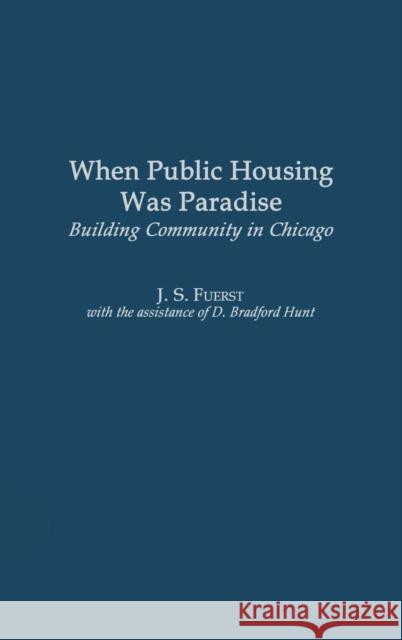When Public Housing Was Paradise: Building Community in Chicago » książka
When Public Housing Was Paradise: Building Community in Chicago
ISBN-13: 9780275974978 / Angielski / Twarda / 2003 / 264 str.
When Public Housing Was Paradise: Building Community in Chicago
ISBN-13: 9780275974978 / Angielski / Twarda / 2003 / 264 str.
(netto: 364,00 VAT: 5%)
Najniższa cena z 30 dni: 377,06 zł
ok. 30 dni roboczych.
Darmowa dostawa!
This collection of 79 oral histories offers a remarkable window into public housing's past in Chicago through the voices of its former residents and staff. Public housing was once a paradise of good housing, positive community, and careful management--a past that offers a blueprint for public housing's future. As John Hope Franklin suggested, Fuerst has given us something about which to ponder quite seriously.Fuerst offers a collection of 79 oral histories of former public housing residents and staff in Chicago. The voices remember a time between 1938 and 1960 when public housing offered low-income families desirable and attractive housing, a strong sense of community, and a supportive environment for children and families. Public housing also served as an engine of upward mobility into the middle class and beyond, particularly for African Americans. Repeatedly and emphatically, former residents describe positive experiences, communal feeling, and real gain from project life. They attribute much of this success to careful management by the program's early administrators, several of whom are interviewed.The remarkable and surprising stories told--about project life, about family and work, about race and community--offer a window into a time that has largely been forgotten, as the more recent decline of public housing has overshadowed the history of success documented here. Yet this past must be remembered, because the policies in place when public housing was paradise offer a path for revitalizing a much-needed program. As John Hope Franklin points out, Fuerst has given us someting about which to ponder quite seriously. Or, as Studs Terkel notes, Fuerst, who was there from the moment of creation, has put together a marvelous book. It is a collage of memories from those who recall the beauty that was there and the something bleak that has been manufactured. This work is full of heroes, the tenants of public housing today. It should be must-reading, especially for young journalists who would seek the truth of what we patronizingly call 'the inner city.' An important resource for scholars, students, professionals, and interested readers concerned with urban life in America.











